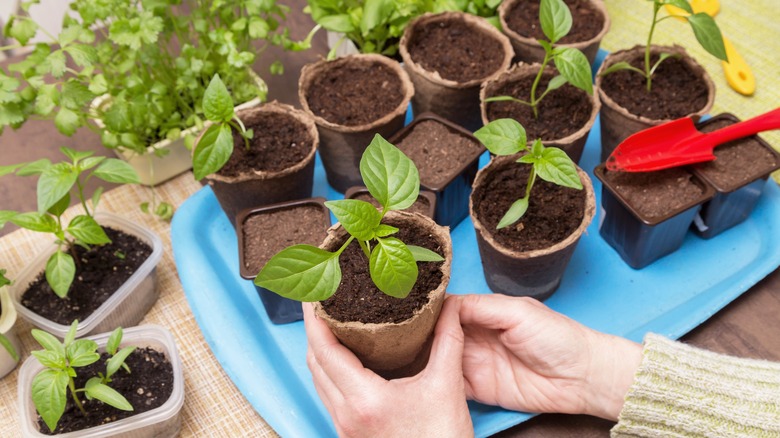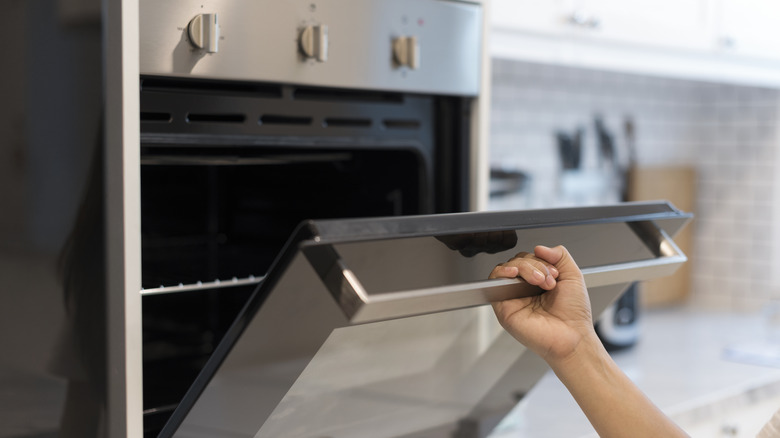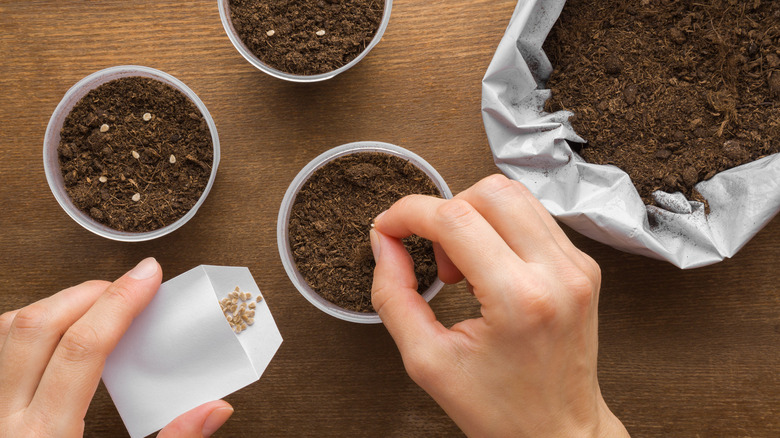When You Should Sterilize Potting Soil And How To Do It Right
The concept of sterile soil seems like an oxymoron, and in most situations, it is. In our outdoor gardens, we definitely do not want our soil to be sterile. The biodiversity resulting from a healthy balance of fungi, bacteria, and insects helps keep the soil loose while ensuring nutrients are available to plant roots. Nothing will grow in a sterile outdoor garden, but in controlled environments, a sterile planting medium can help protect young seedlings from deadly pathogens while ensuring you don't deal with nasty bugs in your indoor planters.
In over 20 years as a gardener and 10 as a master gardener, I have made just about every possible mistake. While plant problems are always annoying and frustrating, they are also an opportunity to learn. One of the most important lessons is understanding how to use the right soil in each situation. If you are contemplating what soil to use, the answer is pretty simple: indoor plants should have sterile soil, while the planting medium for outdoor plants does not require sterilization.
You can certainly use sterile soil in outdoor planters, but it won't stay sterile for long, and that's okay. But there is one exception. If you have had a problem with fungi or bacteria in a potted plant, the soil should be discarded and the planter sterilized before reusing.
Sterilizing potting soil
There are a few reasons you might want to sterilize your soil before planting. In many situations, it's a matter of frugality. It seems like a waste to throw away soil or a soil mix just so you can use it again. Perhaps you haven't even used the soil yet, but it was left outdoors for a while. Even if the soil was originally sterile in the package, fungi and bacteria will grow in that moist soil environment. Regardless of the reason, it's easy to sterilize soil, but be prepared — it can make your kitchen kind of stinky.
You'll want to sterilize your soil on a day when you can open the windows unless you really like the smell of dirt. Essentially, this sterilization process kills all soil pathogens and insects by cooking them. To eliminate these potential problems, start by heating your oven to 180 degrees Fahrenheit. Fill a roasting pan with up to 4 inches of soil, then seal it in with a layer of aluminum foil. Since the soil must reach 180 degrees, keep a meat or candy thermometer handy to check the temperature every 30 minutes. Once it reaches that temperature, turn off the oven and leave the pan inside, covered, for at least another 30 minutes. At this point, the soil is sterile and can be used to start seeds or for repotting your indoor plants.
Purchasing potting soil
Store-bought potting soil and seed-starting mixes should be sterile for the exact reasons we mentioned earlier. This only applies to seed starting mix and potting soil, not garden or top soil. The problem is that not all stores keep their products stored properly. In the spring, stores are overflowing with gardening supplies, and very often, anything that looks like it can be kept outside is placed in the elements to make more room inside. Potting mixes that look like soil may get wet if they are stored in an open or semi-open space, putting them at risk of losing their sterile status. Once that planting medium gets wet, there is no guarantee that it is free of fungi, bacteria, and bugs.
While there's no way to guarantee the product you're buying is sterile, I do have a few tips. The first, and most obvious, is observing where the potting mix is stored. If it's outside, it's not sterile. If items are stored in a covered space that is open on the sides, like most garden centers, check the weight of the package of the mix. If it's very light, it's unlikely it has ever been wet because once those mixes get damp, they tend to hold water within that plastic bag. In this case, I would assume it's still sterile. Mixes stored inside the store should be perfectly fine.


